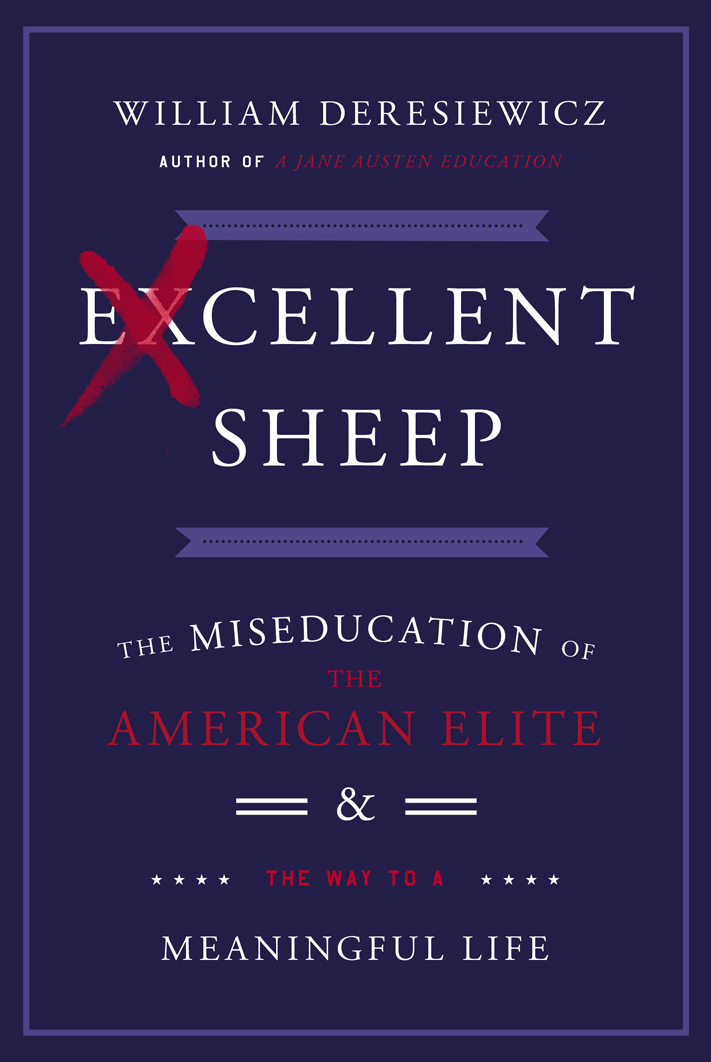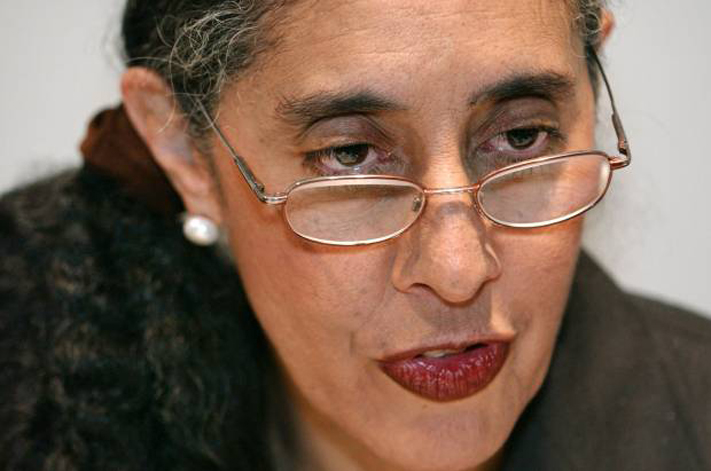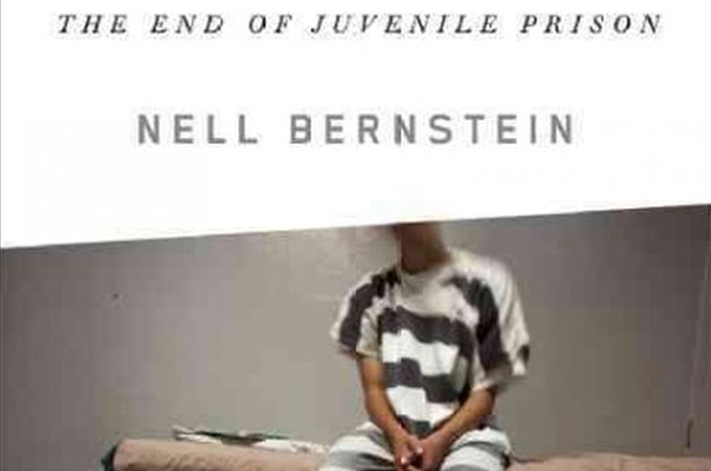Project Description
Spirit Guides ¬ A Teacher Awakens; A Teacher Inspires
If you want a good education, you need to have good teachers. It seems ridiculous to have to say as much, but such is the state that matters have reached, both in academia and in the public conversation that surrounds it, that apparently we do. Between the long-term trend toward the use of adjuncts and other part-time faculty and the recent rush to online instruction, we seem to be deciding that we can do without teachers in college altogether, at least in any meaningful sense. But the kind of learning that college is for is simply not possible without them.
Teaching is not an engineering problem. It isn’t a question of transferring a certain quantity of information from one brain to another. “Educate” means “lead forth.” A teacher’s job is to lead forth the powers that lie asleep within her students. A teacher awakens; a teacher inspires. We’re all familiar with the way this feels, because we’ve all had someone who has played this role for us. A teacher is Plato’s Symposium, your teacher’s presence makes you teem with thoughts that beg to be released into the world. The imagery seems contradictory: are you pregnant already, or does your teacher’s presence make you so? Both: a teacher helps you to discover things inside you that you didn’t know were there.
But we needn’t even talk about the soul. Let’s stick to the mind in the narrower sense, the organ that we all agree a college education ought to go to work upon. To put it in the language of computers, you can download all the data you want, but it won’t be any good to you unless you have the software to make use of it. That software, the ability to operate on information—to understand it, to synthesize it into new combinations, to discover and create with it—is what college is meant to “install.” But here the analogy breaks down, for unlike actual software, the installation isn’t quick and easy, and it certainly isn’t passive.
Remember that the central intellectual ability that you’re sup¬posed to develop in college is that of analyzing other people’s argu¬ments and formulating your own. If mastering a skill requires ten thousand hours of practice, it’s no wonder that college is only a start, with more work to do in graduate school or on the job. (You’d need to be at it for fifty hours a week, fifty weeks a year, to fit it all in as an undergraduate.) And that assumes that you receive the proper in¬struction. You write a paper that makes an argument. Your teacher goes through it point by point, identifying errors in logic, faults in structure, problems with the way you handled evidence, opportu¬nities you missed, and places where objections should have been anticipated. He also raises further questions, suggests additional lines of inquiry, and commends the ways in which you did things right.
Then you do it again, and again, and again, in class after class after class, slowly strengthening your skills. You write a three-page essay (that you get, at best, a C on) your first week of freshman com¬position, a bunch of fifteen-page seminar papers junior year, and a fifty-page thesis that you hand in a few weeks before you graduate. Or if you’re a science major, you go through an analogous process with lab reports or computer programs or mathematical proofs.
In class, you do not spend your time transcribing information. The proponents of distance learning are not incorrect to believe that lectures are usually an inferior form of instruction. That is why a significant portion of classes, at least, should be small enough to run as seminars. The purpose of a seminar is to enable your profes¬sor to model and shape the mental skills she’s trying to instill. She conducts a discussion about the material, but she doesn’t simply let you talk. She keeps the conversation focused. She challenges assertions, poses follow-up questions, forces students to elaborate their one-word answers or clarify their vague ones. She draws out the timid and humbles (gently) the self-assured. She welcomes and encourages, but she also guides and pushes. She isn’t there to “answer questions,” at least not for the most part; she’s there to ask them.
A teacher helps you to discover things inside you that you didn’t know were there.
Some of those questions should be ones she doesn’t know the answer to herself. Discussion in a seminar should be collaborative and open-ended, alive with serendipity and the energy of imminent discovery—a model, too, of how to think together. A student at Pomona praised his professors to me for granting students the “necessary illusion of discussing a book as a peer.” Yet it isn’t alto¬gether an illusion. One of the rewards of being a professor is the chance to learn from fresh young minds as well as teach them. In The Marriage Plot, the class that changes Mitchell’s life concerns the fate of Christianity in modern culture, whether belief remains a viable option. “Richter asked the students questions and listened to their answers as if it might happen here today: in Room 112 of Richardson Hall, Dee Michaels, who played the Marilyn Monroe part in a campus production of Bus Stop, might throw a rope ladder across the void.” I myself became a decent teacher only when I started to relinquish some control over the classroom—stopped worrying so much about “getting my points across” and recognized that those moments of disorder that would sometimes occur, those spontaneous outbreaks of intelligence, were the most interesting parts of the class, for both my students and myself. We were going somewhere new, and we were going there together.
College teaching, like any other kind, is a slow, painstaking, difficult process. (It is also, when properly done and adequately supported, an intensely gratifying one.) It is itself a complex craft that can’t be scaled or automated. You have to get to know your students as individuals—get to know their minds, I mean—and you have to believe completely, as a fellow student wrote about my own professor, Karl Kroeber, in each one’s absolute uniqueness. (It was Karl who said that a genuine teacher teaches students, not courses.) “Mitchell observed Richter’s thoroughness,” Eugenides writes, “his compassionate revelation of error, his undimmed enthusiasm for presiding over the uncluttering of the twenty or so minds gathered around the seminar table.”
My years in the classroom, as well as my conversations with young people about their college experience, have convinced me there are two things, above all, that students want from their professors. Not, as people commonly believe, to entertain them in class and hand out easy A’s. That’s what they retreat to, once they see that nothing better is on offer. What they really want is that their teachers challenge them and that they care about them. They don’t want fun and games; they want the real thing.
What they want, in other words, is mentorship. I remember just how starved I was for that myself in college. I saw how starved my students were: for validation, for connection—for (let’s not be shy of saying it) parental figures other than their parents. Not only is there nothing wrong with that desire, it is a necessary part of growing up. Other cultures—Jewish, Indian, East Asian—with their veneration of the teacher, recognize as much. In South Korea, so I’m told, par¬ents warn their children that if they don’t stop misbehaving, they’ll tell their teachers. But in America, we’re not so sure. We are posses¬sive of our kids, jealous of other influences upon them. But in The Path to Purpose, William Damon talks about the critical importance of outside adults in helping young people find their way. And Mark Edmundson remarks, while acknowledging the inevitable sadness for the parents who are left behind, that “it almost seems the natural order of things that children will leave their families and strive to put themselves under the influence of other guides . . . more attuned to their rising hopes.”
I heard a colleague give a presentation once on how to keep your office hour meetings under seven minutes. Sessions should be coming in. So far, so good: instructors certainly need to manage their time. But then she said, “Anything beside their work, I don’t talk to them about. I don’t offer psychological advice for the same reason that I wouldn’t let a therapist grade their papers.”
There are two things, above all, that students want from their professors – that their teachers challenge them and that they care about them.
It was a clever line, but it bespoke a common misconception about the kind of guidance that a mentor gives. You do not talk to your students; you listen to them. You do not tell them what to do; you help them hear what they themselves are saying. You ask the kinds of questions that Lara Galinsky talks about as being im¬portant at times of decision—those “why” questions that help people connect with what they care about. Most advisors just tell you what courses to take, a student at Brown remarked to me, but the best ones “help you to think in a different way about the choice.” As Harry R. Lewis suggests, a mentor looks for the questions behind the questions their advisees ask. “The most important job of the advisor,” he writes, “is to help students understand themselves, to face and take responsibility for their decisions, and to support and to free them to make choices that are at odds with the expectations others have for them.” Students look to mentors—figures “more at¬tuned to their rising hopes”—to give them what their parents won’t or can’t: the permission to go their own way and the reassurance that their path is valid.
Lewis speaks of professors in their formal roles as academic advisors, but regardless of whose office they’re supposed to go to, students gravitate toward teachers with whom they have forged a connection. Learning is an emotional experience, and mentorship is rooted in the intimacy of intellectual exchange. Something important passes between you, something almost sacred. Socrates remarks that the bond between a teacher and a student lasts a lifetime, even once the two have parted company. And so indeed it is. Student follows student, and professors know that even those with whom they’re closest now will soon decline to names in an address book, then at last just distant memories. But the feelings that we have for the teachers or the students who have meant the most to us, like those for long-lost friends, can never go away. They are part of us, and the briefest thought revives them, and we know that in some heaven we will meet again.
For all the skill that teaching involves, you ultimately only have a single tool: your entire life as you have lived it up until the moment you walk into class. “The teacher, that professional amateur,” said the critic Leslie Fiedler, “teaches not so much his subject as himself.” He provides a model, he went on, “of one in whom what seemed dead, mere print on the page, becomes living, a way of life.” I developed a rule of thumb in graduate school. If a professor didn’t mention something personal at least a single time—a reference to a child, an anecdote about a colleague—then it was a pretty good bet that I had nothing to learn from him. It’s not that I needed my teachers to be confessional; I just needed them to be present. “Mortimer Adler had much to tell us about Aristotle’s Ethics,” Saul Bellow wrote about the University of Chicago eminence, “but I had only to look at him to see that he had nothing useful to offer on the conduct of life.”
Students want you to be honest, not least about yourself. They want you to be yourself. You need to step outside the role a bit, regard it with a little irony, if only to acknowledge the dissonance between the institution and the spirit. It often feels that there are certain things you cannot say inside a classroom—the most serious things that you want to say, the most genuine things. You want to say that life is tragic, that we are dangling above a void, that what’s at stake, when you read a book, is nothing less than life itself. But quotation marks. You fear that your words will fall to the ground with an audible clink. That is where a little distance from the situ¬ation is of service. Just because I say this stuff in class, I used to tell my students, doesn’t mean I don’t believe it.
There are two things that kids invariably tell you about their favorite professors. The first one is “she teaches about everything.” That’s never literally true, of course, so what does it actually mean? Great teachers, as Andrew Hacker and Claudia Dreifus remark, are not bound by disciplinary ideas of what they’re allowed to say. They connect the material at hand, in a way that feels spacious and free, with anything to which it might be relevant. They connect it to ex¬perience, and so they shed light on experience—on your experience. Just as great art gives you the feeling of being about “life”—about all of it at once—so does great teaching. The boundaries come down, and somehow you are thinking about yourself and the world at the same time, thinking and feeling at the same time, and instead of seeing things as separate parts, you see them as a whole. It doesn’t matter what the subject is. A student put it to me this way, about a professor in an oceanic studies program: “He made marine ecology reflect universal truths.”
You do not talk to your students; you listen to them. You do not tell them what to do; you help them hear what they themselves are saying. You ask…those “why” questions that help people connect with what they care about.
You know great teaching the moment you encounter it. Yes, you feel, this is it—this is what I came for. It reaches deep inside you. It satisfies desires that you didn’t know you had. It makes the world feel newly large and meaningful—exactly, again, like art. The other thing that students say about their favorite teachers is “he changed my life.”
There is only one problem with telling students to seek out good teaching in college. They’re going to have some trouble finding it, because academic institutions usually don’t care about it. Oh, they’ll tell you otherwise, in their promotional material. But I advise you to be skeptical. The profession’s whole incentive structure is biased against teaching, and the more prestigious the school, the stronger the bias is likely to be.
The trouble goes back to the conflict between the missions of the college and the university. Ever since the research model took root in the late nineteenth century, scholarship has been the path to status for both professors and schools, and teaching has been valued less and less. Already by the start of the twentieth century, Andrew Delbanco reports, “ambitious academics regarded teaching undergraduates as a distraction and a burden.” The transformation wasn’t instantaneous, of course. In 1923, the dean of the graduate school at Brown was warning about a professoriate that was still too committed to instruction. But he’d find little to concern him now. With the postwar, and even more, post-Sputnik explosion of funding, the research model began to diffuse itself throughout the system as a whole. “The research professor,” writes Louis Menand, became “the type of the professor generally.” Between 1960 and 1990, federal research funding quadrupled while average teaching hours fell by half. Publish or perish: professors’ loyalties lay with their disciplines now, not with their institutions. Their validation and advancement came from research, not teaching. Their attention was absorbed by peers, graduate students, conferences, scholarly journals, professional organizations—everything except their undergraduates.
The glut of PhDs that started in the 1970s enabled schools to ratchet up their expectations. Now you had to publish more and more, whether or not the work was any good. Academic journals proliferated, as did university presses. More recently, the emergence of technology transfer as a major academic revenue stream—licensing balance of institutional interests ever more decisively in favor of research (as well as against the humanities). Star professors, who can pull in outside funding, are increasingly coveted, and a common strategy for luring them has been to excuse them from all but the most nominal pedagogical responsibilities (as anyone who’s been to Harvard knows).
But everybody wants to be a star—and every institution wants to be a player. Second-level public universities (which usually means the ones with “State” in their name, like Michigan State) now aspire to compete with their respective flagship schools (like the University of Michigan). U.S. News has also had its baleful role to play. Fifteen percent of an institution’s score on the all-important rankings con¬sists of “academic reputation” as judged by administrators at other schools—a measure that invariably reflects perceptions about re¬search rather than teaching, since nobody really knows what’s going on in other people’s classrooms (or even, indeed, their own). “To a disturbing extent,” Jennifer Washburn writes in University Inc., “administrators have simply concluded that they need not concern themselves with the quality of undergraduate instruction.”
How much of all this scholarship is worth a damn is open to question, but there’s no debate about the impact that the focus on it has on what transpires in the classroom. “A superior faculty,” wrote Clark Kerr, the architect of California’s public higher education system, “results in an inferior concern for undergraduate teaching.” Teaching well takes time. Challenging your students takes time: you have to assign a lot of work, and you have to comment on it care¬fully. Caring about your students takes time: you need to be willing to talk to them, if only about their work, and often for a lot longer than seven minutes. Just learning how to run a class takes time: how to lead a discussion, how to ask a good question, how to deliver a lecture that is worth your students’ attention. The ten-thousand¬hour rule applies here, too.
But every minute spent on teaching is a minute that is not devoted to research. Good teaching isn’t simply undervalued; espe¬cially at elite universities, it is actively discouraged, because it’s seen as raising doubts about your seriousness as a scholar. “Winning the campus teaching award,” said Ernest Boyer, vice president of the Carnegie Foundation for the Advancement of Teaching, “is the kiss of death when it comes to tenure.” This is not a joke. I was told by a professor at a leading university that when he was given such an honor as a junior faculty member, the provost leaned over at the ceremony and whispered, “Don’t worry, this is really a good thing.” Being an awful teacher, the professor later concluded, can hurt you at tenure time, but being a really good one can generate suspicion. The sweet spot, he decided, is to be unremarkable. (How’s that for a slogan to put on a website? “Our teachers are unremarkable!”) There is always that moment of lost innocence among undergradu¬ates at elite schools, usually when a popular teacher is turned down for tenure, when they realize the university isn’t really about them.
The unspoken premise among institutions—or at least, the unspoken rationalization—is that the best scholars make the best instructors. But there is little reason to believe as much, and a lot of reason to believe the opposite. Never mind the issue of time. Academic training actively deprives you of the qualities that make for good teaching. A good teacher speaks plainly, in vivid, accessi¬ble language, because she is addressing what amounts to a general audience. But the kind of jargon academics learn to use is designed to repel the uninitiated. A good teacher ranges widely, making connections among subjects as well as from learning to life. But academics are constrained to specialize, and increasingly, to hyperspecialize, looking neither left nor right as they plow their little piece in the New Yorker. “No,” he replied, “I don’t read the popular press.”) A good teacher, as I said, is personal. But academics learn to abstract themselves from the way they communicate, since scholarship is meant to be objective. Academic prose has been described as “author-evacuated,” and there are classrooms one could equally describe as teacher-evacuated.
There are certainly many now that are professor-evacuated. I don’t need to dwell on the shift, since the 1970s, from tenure-track faculty to contingent academic labor—adjuncts, postdocs, graduate students, and full-time non-tenure-track instructors—except to say that it’s getting worse all the time. As of 2011, tenure-track professors— the “normal” kind of academic appointment—represented less than 25 percent of the American faculty. Contingent labor is a lot cheaper, never mind what its employment does to instructional quality. Ad¬juncts are often remarkably industrious and dedicated, especially given the fact that their pay is ludicrously low (in the vicinity, on av¬erage, of three thousand dollars a course), but they tend to be over¬worked, overwhelmed, and relatively inexperienced, not to mention transient. Contingent instructors also tend to cluster in the kinds of introductory courses that professors shun—the very classes where it’s most important to make students feel enfranchised, as they enter the alien world of college. And when a professor is at the front of the room, it’s apt to be a lecture hall, with actual student contact han¬dled by teaching assistants—or at many places, simply nonexistent.
Kids know they’re being cheated. One of my students told me that she had very few professors with whom she felt that she was “getting taller intellectually.” Others said that one-to-one interaction with teachers was hard to come by, and real intellectual dialogue almost impossible—this despite the fact that Yale has a student-faculty ratio of 6:1, among the very lowest in the country. And Yale, it seems, is one of the best when it comes to instruction, at least among elite universities. A colleague who had taught at Harvard was amazed to find that we talked about teaching at all. A student at Northwestern told me that the kids there have to compete for their teachers’ attention. A 2005 survey of college freshmen found that less than one in six were “very satisfied” with the teaching they’d ex¬perienced. A survey of seniors found that more than a third reported being “frequently bored in class.”
Students want you to be honest, not least about yourself. They want you to be yourself. You need to step outside the role a bit, regard it with a little irony, if only to acknowledge the dissonance between the institution and the spirit.
And now, of course, come the MOOCs, those massive open online courses. Why anybody sees them as an answer is a mystery to me. Yes, they are cheaper, but they also make what’s bad about the cur¬rent situation even worse. Students complain that their professors are remote, so we’re going to make them more remote (literally so, in fact). They feel that they have little contact with their teachers, so we won’t allow them any. They need challenging assignments and detailed, individualized feedback, so we’re going to give them multiple-choice quizzes that we grade by machine. Online instruction isn’t just conducted on the Web; it embodies an idea of knowledge that’s been shaped by the Web—by Google, by Wikipedia—a confusion of information with understanding. I still don’t get why a MOOC is substantially more than a sexy textbook, one that pro¬motes a range of practices and behaviors that higher education ought to fight against: passive learning, diminished attention, the displacement of reading by watching, teaching as showmanship, and the professorial star system. Replacing traditional courses with MOOCs would be like taking children away from a neglectful mother and handing them over to a wire monkey.
MOOCs are not about democratizing education. That is just their cover story. They’re about reinforcing existing hierarchies— market lurches and heaves. The kids at Harvard get to interact with their professors. The kids at San Jose State get to watch the kids at Harvard interact with their professors. San Jose looks worse than before; Harvard looks even better. That is why Coursera and the rest are working with places like Princeton and Berkeley, even though their faculty are hardly likely to represent the best avail¬able, since teaching isn’t why they have their jobs. The currency the MOOCs are dealing in—and from the schools’ point of view, at least, seeking to maximize the value of—is not instructional quality, but prestige.
You’ll know those institutions take their online courses seriously as a form of education when they start awarding credit for them. But don’t hold your breath. They have no intention of diluting their brands. Kids at Dartmouth or Columbia are still going to get, and their parents are still going to pay for, the deluxe residential experience: contact (at least nominal) with famous professors, state-of¬the-art facilities, endless extracurricular opportunities, and above all, the chance to meet, mix with, and marry their equally privileged or soon-to-be-privileged peers. Even in purely instructional terms, no one has claimed that MOOCs are anything close to traditional college classes. It’s long been established that quality online instruc¬tion, including “blended” courses that combine the old and new modalities, is no less costly than the face-to-face variety, precisely because it is equally labor-intensive.
When the purveyors of MOOCs—or their useful idiots in the media, who usually have no experience as teachers—extol the civic virtues of their enterprise, they want us to envision that mythic child in darkest Africa who, having somehow gotten access to a high-speed connection, enjoys educational parity with every other kid in the world. In fact, that’s not their target audience at all.
Coursera et al. are for-profit companies, and the universities with whom they work (and this goes for edX, the leading nonprofit, as well) expect to see a return on their considerable investment. The goal is to generate revenue, especially by licensing courses to schools that are lower on the food chain. Now that the state legislature in California—where the leading for-profits are headquartered, and where the tech business wields a lot of political clout—has pushed through a law requiring the Cal State system to accept MOOCs for credit, that objective is in sight. What we are seeing, in other words, is nothing less than the monetization and privatization of public higher education.
People like to say these days that college is a bubble, but the real bubble is the MOOCs. (In fact, Sebastian Thrun, cofounder of Udacity, has already run the flag down the pole, announcing that early experiments were a failure and that he was turning his atten¬tion to corporate clients.) Despite the recent rush in their direction, MOOCs have yet to demonstrate much benefit at all, even on their own terms. Only about 4 percent of students who start one actually finish it, but most of those are adult learners who already have de¬grees and are looking for enrichment or new skills—people, that is, who are capable of directing their own education. Yet that is exactly what kids go to college to learn how to do. When businesses start to hire people with online “completion certificates” rather than tradi¬tional degrees—and hire them for jobs that require complex skills and promise real advancement—we’ll know that MOOCs have even the barest of practical value.
I just hope it’s not too late by then. There are people out there who are looking for the chance to dismantle higher education and sell it for parts. Once that’s done, it can’t be undone. College is not like cable television, another service people talk about “unbundling.” You can get as much out of Comedy Central whether or not you’re you’re also buying The Colbert Report, but college is a holistic, se¬quential, immersive experience. Institutions ought to keep in mind that the one product they have to offer that no one can duplicate or automate is, precisely, the liberal arts education.
The only genuine solution to the crisis in the classroom is for colleges to bring back teaching to the center of their mission. That means finding the will—and yes, the money—to reverse the long-term trends that have given rise to the present disaster: the move to contingent labor and the exclusive embrace of the research model. Universities need to staff their courses with real professors again, not academic lettuce-pickers. If we want people to do the hard, highly skilled work of educating the next generation—of workers, of thinkers, of citizens, of leaders—then we need to pay them well and treat them with respect. It isn’t that professors do not make enough; it’s that there aren’t enough professors. Doubling the current num¬ber wouldn’t overshoot the mark, and by making the academic job market into something other than the slaughterhouse it’s been for as long as anyone remembers, we would also enable a larger number of our brightest students to regard the profession as a viable career path again.
But we also need to redefine the job. Very simply, more teaching, less research. We can improve pedagogical training, especially in graduate school, as some have suggested. We can offer bonus pay to those who excel in the classroom, as has also been proposed. But nothing’s really going to change until we alter the basic incentives. That means one or both of two things: raising teaching to equal importance with research when it comes to making decisions about hiring, retention, promotion, and tenure, or creating a parallel teaching faculty of equal pay, job security, and institutional respect. If people could advance up the ladder through teaching or research or a combination of the two, we’d get a lot less pointless scholarship and a lot more quality instruction.
A lot of faculty would welcome this arrangement, I believe. For every egotist who thinks his monograph is going to change the world, there are probably several professors who’d be happy to sur¬render the grind of publication and the pretense of originality: who have long felt that they “don’t have anything to say” (a phrase one often hears), who are tired of spewing jargon for the benefit of half a dozen fellow subsubspecialists, who’d be delighted to trade the often stultifying work of the library or the lab for live contact with actual students.
You want your teachers to be very smart, and you want them to know what they’re talking about, but neither requires them to be leading scholars (still less, nonleading ones). Among the people I knew at Yale, the best teachers—as well as the most interesting individuals to talk to—were often to be found among the cadre of longtime instructors who helped to staff the introductory English courses. The truth is we already have a teaching faculty—those very same contingent workers. We just need to make them into a real faculty, not a class of academic helots.
There is a large, public debate in this country about primary and secondary education. There is now another, equally public de¬bate about higher education. What I fail to understand is why they aren’t the same debate. We all know that students in elementary and high school learn best in small classrooms with the individualized attention of motivated teachers. It is the same in college. Kids don’t suddenly turn into different people—fully independent and intellectually self-sufficient, needing only to be plugged into a computer—the moment that they turn eighteen. Teaching isn’t information transfer, and it isn’t entertainment, either. It’s about the kind of interchange and incitement that can only happen in a seminar—“seminar” being a fancy name for what every class already is from K–12. It is labor-intensive; it is face-to-face; it is one-at-a¬time. We can try to do it on the cheap, but we will get exactly what we pay for.
From Excellent Sheep: The Miseducation Of The American Elite And The Way To A Meaningful Life by William Deresiewicz. Copyright © 2014 by William Deresiewicz. Reprinted by permission of Free Press, a Division of Simon & Schuster, Inc.
William Deresiewicz is an award-winning essayist and critic. He taught at Yale from 1998-2008 and was a graduate instructor at Columbia from 1993-98. He is the author of Excellent Sheep: The Miseducation of the American Elite and The Way to a Meaningful Life.












